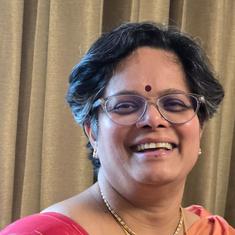In Dhundiraj Govind Phalke’s Raja Harishchandra (1913), the titular king gives away his kingdom, his wife, and his belongings to fulfill a promise made to the sage Vishwamitra.
In the biopic Harishchandrachi Factory (2009), Phalke pawns his wife’s jewellery and sells his furniture to fulfill a promise made to himself – of being a filmmaker.
Raja Harishchandra was released on May 3, 1913. It is India’s first full-length feature film, and earned its pioneering director the title “Father of Indian Cinema”. The mythology-inspired Raja Harishchandra is about a righteous king (Dattatraya Damodar Dabke) who endures several tests for having distracted Vishwamitra from his meditation.
Phalke underwent his own trial by fire for daring to following his dreams. The polymath who had juggled several other professions – photography, printing, makeup, and magic – was blown over by the youngest of the arts after watching the silent film The Life of Christ in Mumbai in 1910. Representatives of the Lumiere brothers had already screened short films in Mumbai in 1896, and Indians were attempting to master the new art form too. HS Bhatvadekar’s The Wrestlers, shot in Mumbai in 1899, was the first Indian documentary. On May 18, 1912, Dadasaheb Torne’s Shree Pundalik was released. Since it is a recording of a play, it isn’t considered the first Indian film in the way that Raja Harishchandra, a fictional feature, is.
Phalke quit his job at a printing press to pursue his obsession. Financiers were suspicious of cinema and preferred to back stage productions, and they were initially unconvinced that 42-year-old Phalke could succeed in the new medium. He showed them just how serious he was by making a short film, Birth of a Pea Plant, which used stop-motion photography to capture the plant’s progress.

Armed with funds to buy equipment, Phalke sailed to London in 1912 to purchase a Williamson camera and developing and printing tools. He underwent training from British reel makers, and peered at spools of film so intensely that he briefly lost his eyesight.
Once Phalke had mastered the apparatus, there were other challenges. He could not find a female lead for the role of Harishchandra’s wife, Taramati. Cinema was considered to be a dubious new medium at the time, and the moment is humourously depicted in Paresh Mokashi’s biopic Harishchandrachi Factory. An exhausted Phalke reads out scripts to prostitutes to persuade them to play Taramati.
Phalke eventually roped in male actors for the female roles. Anna Salunke was cast as Taramati. The director pawned his furniture and the family jewels to complete the film. Raja Harishchandra was eventually released at Coronation Cinema in Mumbai and was a huge success.
The original print consisted of four reels, but perished a few years after its release. In 1917, Phalke directed a frame-by-frame remake of Raja Harishchandra at a shorter running length.
Phalke’s career included several acclaimed features and documentaries, including Mohini Bhasmasur (1913), Lanka Dahan (1917) and Shri Krishna Janma (1918). His final film was Gangavataran in 1937. It all started on May 3, 1919, and it wasn’t easy.










